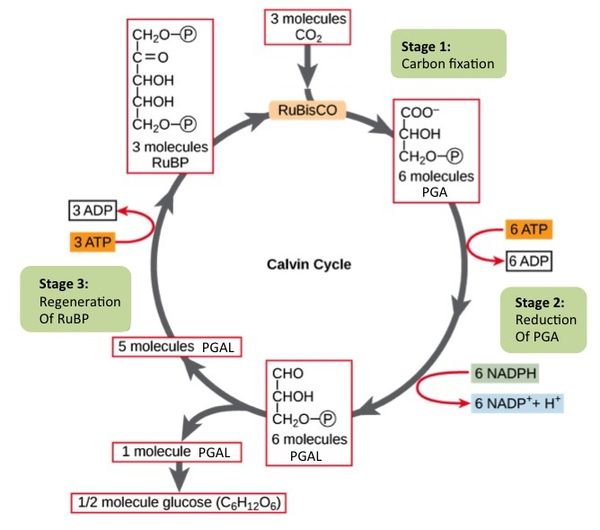| << Chapter < Page | Chapter >> Page > |
By blending water and minerals from below with sunlight and CO 2 from above, green plants link the earth to the sky. We tend to believe that plants grow out of the soil, but in fact most of their substance comes from the air.Fritjof Capra, The Web of Life: A New Scientific Understanding of Living Systems , (1997)
After the energy from the sun is converted into chemical energy and temporarily stored in ATP and NADPH molecules, the cell has the fuel needed to build carbohydrate molecules for long-term energy storage. The products of the light-dependent reactions, ATP and NADPH, have lifespans in the range of millionths of seconds, whereas the products of the light-independent reactions (carbohydrates and other forms of reduced carbon) can survive for hundreds of millions of years. Carbohydrates, like the cellulose that makes up the bulk of most plants, obviously contain carbon. Where does the carbon come from? It comes from the air, in the form of carbon dioxide, the gas that is a waste product of respiration in microbes, fungi, plants, and animals.
In plants, carbon dioxide (CO 2 ) enters the leaves through stomata, where it diffuses over short distances through intercellular spaces until it reaches the mesophyll cells. Once in the mesophyll cells, CO 2 diffuses into the stroma of the chloroplast—the site of light-independent reactions of photosynthesis. These reactions actually have several names associated with them. Another term, the Calvin cycle , is named for the man who discovered it, and because these reactions function as a cycle. Others call it the Calvin-Benson cycle to include the name of another scientist involved in its discovery. The most outdated name is dark reactions (the term originally used by Melvin Calvin, who got the Nobel Prize for elucidating these reactions), because light is not directly required ( [link] ). However, the term dark reactions can be misleading because it implies incorrectly that the reaction only occurs at night or is independent of light, which is why it has faded from everyday usage.

The light-independent reactions of the Calvin cycle can be organized into three basic stages: fixation, reduction, and regeneration.
In the stroma, in addition to CO 2 , two other components are present to initiate the light-independent reactions: an enzyme called ribulose bisphosphate carboxylase (RuBisCO), and three molecules of ribulose bisphosphate (RuBP), as shown in [link] . RuBP has five atoms of carbon, flanked by two phosphates.


Notification Switch
Would you like to follow the 'Principles of biology' conversation and receive update notifications?